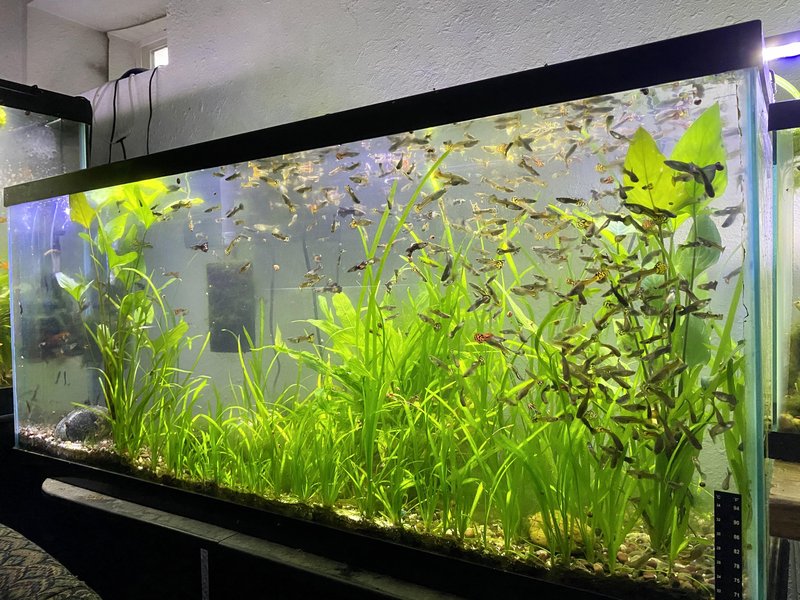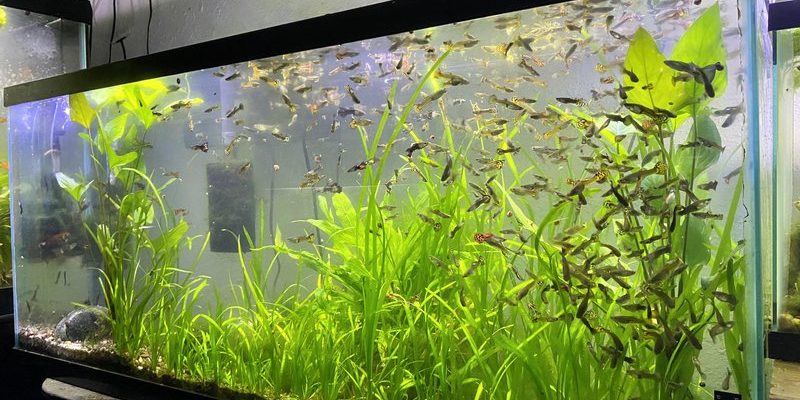
When you think of your guppy tank, picture it as a cozy home for your fish. The plants serve as both decoration and essential living spaces, while the substrate acts like the foundation of that home. So, let’s dive into the world of aquatic gardening and find out what plants and substrate work best for your guppy tank!
Why Plants Matter in a Guppy Tank
Have you ever wondered why we bother with plants in fish tanks? Well, they aren’t just pretty decorations. Plants actually play a vital role in the health of your aquarium. Think of them as natural filters. They help to oxygenate the water, remove toxins, and provide essential hiding spots for your fish. Guppies, being curious little creatures, love to explore and hide among plants, which helps reduce their stress levels.
Moreover, plants can create a more natural environment for your guppies. When they feel safe and secure, they are likely to display their vibrant colors and quirky behaviors. Some of the best plants for guppy tanks include Java Fern, Anubias, and Hornwort. Each of these plants offers unique benefits, so let’s break them down.
Best Plants for Guppy Tanks
Java Fern
Java Fern is a classic choice for guppy tanks. This resilient plant can thrive in a variety of water conditions and lighting. Its broad, green leaves provide ample hiding spots for baby guppies, making it a favorite among breeders. You can attach Java Fern to driftwood or rocks, allowing it to grow naturally without needing to be planted in substrate.
Plus, here’s the thing: Java Fern doesn’t require heavy fertilization or special care, making it a low-maintenance option for beginners. If you’re looking for a hearty plant that can survive the occasional mishap, this is your go-to.
Anubias
Anubias is another excellent plant for guppy tanks. Like Java Fern, it does well in low-light conditions and can also be attached to driftwood or rocks. Its thick leaves aren’t just good for aesthetics; they provide great shelter for young guppies, offering them a safe haven from larger fish. Anubias can also help improve water quality, as it absorbs harmful substances.
As a bonus, this plant grows slowly, meaning you won’t constantly need to prune it. It’s a reliable option, especially if you’re just starting. Just be sure not to bury the rhizome in the substrate; it should sit on top or be attached to something.
Hornwort
Hornwort is a floating plant that adds instant greenery to your aquarium. Its feathery appearance creates a nice contrast with the sleek bodies of guppies. This plant grows rapidly, which means it can help absorb excess nutrients in the water, thus reducing algae growth.
Because it floats, Hornwort also creates shaded areas for guppies to explore and hide. Just be aware that Hornwort can get quite tall, so you may need to trim it regularly to maintain a balanced look in your tank. But honestly, who doesn’t love a bit of greenery?
Choosing the Right Substrate
Now that you’ve got a handle on the best plants, let’s talk about substrate. The substrate is what lines the bottom of your tank and influences both the aesthetic and health of your aquarium. The right substrate can promote healthy plant growth and support beneficial bacteria, which helps maintain clean, clear water.
You’ve got a few options to consider: gravel, sand, and specialized substrates. Each type comes with its pros and cons, so let’s explore them.
Gravel
Gravel is a popular choice for guppy tanks. It’s easy to clean, comes in various colors, and allows for good water flow, which is essential for aeration. However, if you plan to keep root-heavy plants, you might want to consider a finer grade of gravel. Larger gravel can make it hard for plants to anchor their roots.
Additionally, gravel allows for beneficial bacteria to thrive, helping with the nitrogen cycle. Just remember to rinse it thoroughly before adding it to your tank to remove any dust or debris.
Sand
Sand can give your tank a stunning, natural look. It’s particularly appealing if you’re going for a riverbed aesthetic. Sand is less likely to trap waste compared to larger substrates, which makes cleaning a bit easier. However, it can compact over time, which may hinder root growth for plants. If you have plants like Anubias and Java Fern, they won’t be affected as much since they don’t root deep into the substrate.
Keep in mind, sand can also be tricky for some fish, as it can get kicked up easily, reducing visibility. But with guppies, they shouldn’t have any trouble navigating around it.
Specialized Substrates
Specialized substrates are designed specifically for planted aquariums. They often contain nutrients to support healthy plant growth. If you’re serious about creating a lush environment for your guppies, this might be the way to go. However, these substrates can be more expensive than standard gravel or sand.
Be aware that specialized substrates might require a bit more maintenance. They can become compacted or lose their nutrient content over time. But if you keep an eye on them and refresh as needed, they can lead to a thriving underwater garden.
Maintaining Your Guppy Tank
Once you have your plants and substrate settled, maintaining your guppy tank is crucial for the well-being of your fish. Regular water changes and monitoring water parameters are essential practices. Aim for 10-15% water changes weekly to keep toxins at bay.
Pay attention to your plants too. Regularly check for dead leaves or overgrowth to ensure they’re healthy. If you notice algae buildup, it might be time to adjust lighting or introduce algae-eating creatures like snails.
Speaking of snails, adding creatures that help clean your tank can be very beneficial. Just make sure they’re compatible with guppies, as not all species get along!
Creating the perfect guppy tank is all about finding the right balance between plants and substrate. Java Fern, Anubias, and Hornwort can offer your guppies both beauty and security, while choosing gravel, sand, or specialized substrates will give your tank structure and support.
Remember, every tank is unique, so feel free to experiment with different plants and substrates until you find what works best for your aquatic paradise. With a little patience and care, your guppies will thrive, and you’ll have an eye-catching tank to enjoy. Happy fishkeeping!

